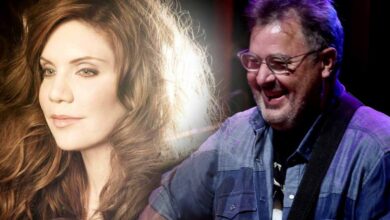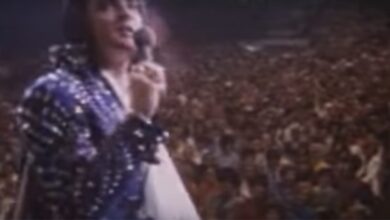Senior Music Enthusiasts Revitalized by Procol Harum’s Timeless Hits
Procol Harum, a seminal band formed in 1967, emerged from the creative synergy between Gary Brooker and lyricist Keith Reid. Their formation marked the beginning of a journey that blended various musical influences, ranging from rock and blues to orchestral and baroque elements. Gary Brooker, born in London in 1945, served as the band’s frontman, contributing not only his distinctive baritone voice but also his skills as a pianist. With Reid’s poetic and often abstract lyrics, they forged a sound that was both unique and deeply evocative, distinguishing Procol Harum from the myriad of bands that defined the late 1960s music scene.
The release of “A Whiter Shade of Pale” in 1967 catapulted Procol Harum to fame, introducing audiences to their rich and complex sound. The song showcased Brooker’s soulful vocal style, complemented by Matthew Fisher’s haunting organ lines and an arrangement filled with lush, atmospheric instrumentation. Keith Reid’s enigmatic lyrics added layers of meaning, inviting varied interpretations that contributed to the song’s enduring popularity. The track topped charts in multiple countries, embedding itself in the cultural fabric of the era and becoming a quintessential part of the progressive rock repertoire.
Musically, Brooker’s roots in jazz and blues heavily influenced Procol Harum’s direction. This background distinguished the band’s musical approach, allowing them to experiment with different styles, incorporating elements of classical music and expressing complex emotions through their compositions. Their repertoire featured a variety of genres, with songs that explored intricate themes and fostered a deeper connection with listeners. Brooker’s ability to convey profound emotional depth through his performances has made him an iconic figure within the rock genre, influencing countless artists in the years that followed.
Throughout their career, Procol Harum underwent several lineup changes while maintaining Brooker’s leadership and artistic vision. This evolution showcased the band’s adaptability as they navigated various musical trends and shifts in the industry. Despite these changes, the core of their sound remained intact, characterized by a compelling blend of rock instrumentation and lyrical sophistication. Each new album brought forth fresh ideas and sounds, allowing Procol Harum to remain relevant despite the rapidly changing musical landscape.
A defining moment in their later career came with the collaboration with the Danish National Concert Orchestra and Choir in 2006. This concert, held at the picturesque Ledreborg Castle, served not only as a nostalgic celebration of their classic hits but also as a bold reinvention of their music. By integrating orchestral arrangements into their performances, Procol Harum expanded the boundaries of what rock music could encompass, melding the raw energy of rock with the elegance of classical compositions. The setting of Ledreborg offered an extraordinary acoustic environment that enhanced the symphonic elements of their music, creating a unique and immersive experience for the audience.
The orchestral arrangement of “A Whiter Shade of Pale” during this concert exemplified the seamless fusion of rock and classical music. Layers of orchestration added a dramatic depth that elevated Brooker’s already emotive vocals to new heights. Each performance featured a dialogue between the traditional rock band setup and the orchestral elements, demonstrating the versatility and dynamism of Procol Harum’s musical offerings. This innovative approach not only appealed to long-time fans but also attracted new audiences, inviting them to explore the complexities of their musical compositions.
Other beloved tracks were also brought to life through orchestral interpretations during this celebrated concert. Songs such as “Grand Hotel,” “A Salty Dog,” and “Conquistador” were reimagined, showcasing the band’s ability to adapt and enhance their music while remaining grounded in their original sound. Brooker’s piano playing and vocal performance were central to these interpretations, reinforcing his role as the band’s creative anchor. The concert’s repertoire displayed Procol Harum’s evolution over the decades while reminding audiences of the timelessness of their classic works.
The live album released in 2009, documenting the Ledreborg Castle concert, served as a testament to the enduring legacy of Procol Harum. It captured not only the musicality of the performances but also the emotional resonance that characterized the evening. Critics praised the album for its production quality and the stellar performances from both the band and the orchestra, further solidifying Procol Harum’s status in the realm of progressive rock. This live effort celebrated Brooker’s contributions as a singer, songwriter, and musician, highlighting his commitment to artistic excellence.
Gary Brooker’s career, intertwined with Procol Harum’s journey, has been marked by an unwavering pursuit of musical depth and exploration. In a genre often defined by straightforward songwriting, Brooker’s work with orchestras demonstrated a willingness to defy convention and explore the fusion of diverse musical styles. The success of the Ledreborg Castle concert stands as a significant achievement in the band’s history, reflecting Brooker’s visionary approach to music and his dedication to creating transformative experiences for audiences.
In summary, Procol Harum’s impact on rock music is both profound and multi-faceted. Their masterful integration of various musical styles, highlighted by the orchestral collaboration at Ledreborg Castle, underscores their place as pioneers in progressive rock. Gary Brooker’s emotive musicality combined with the sophisticated arrangements and rich, poetic lyrics creates a legacy that continues to resonate. Their story is one of innovation, adaptability, and artistic integrity, ensuring that Procol Harum will be remembered as a significant force in the music industry for generations to come.





